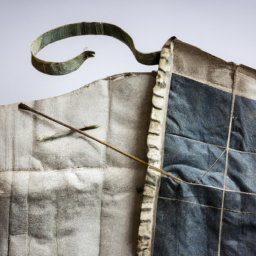
History of Sewing Needles

Sewing needles have played a crucial role in human civilization since ancient times. They are one of the oldest known tools used by humans and have greatly contributed to the development of various textile industries worldwide.
Origins of Sewing Needles
The origination of sewing needles dates back to prehistoric times when early humans began stitching animal hides together to make clothing for protection. These needles were made from bones, antlers, or even thorns that were sharpened to a point. Through trial and error, our ancestors discovered that these primitive tools could be incredibly useful when it came to joining fabrics together.
Needle Evolution in Ancient Civilizations
As civilizations advanced, so did the design and materials used for sewing needles. Ancient Egyptians, for instance, crafted needles from copper and bronze. They used these needles not only for sewing garments but also for embroidery and other decorative textile work.
In ancient China, needles made of iron and steel emerged, showcasing exceptional craftsmanship. These needles were not only used for sewing, but they were intricately designed and decorated, symbolizing the artistry and creativity of the Chinese civilization.
Medieval Europe and the Renaissance
During the Middle Ages in Europe, needles were primarily handmade by skilled artisans. They were crafted with precision and expertise, often embellished with elaborate handles made from materials such as wood, ivory, or bone. The Renaissance period saw further advancements in needle manufacturing, where needles were not only functional but also regarded as symbols of wealth and status.
The Industrial Revolution and Mass Production
The Industrial Revolution marked a significant turning point in the history of sewing needles. With the invention of machinery, mass production of needles became possible. The production process shifted from handcrafting to mechanized methods, resulting in increased accessibility and affordability.
In the 19th century, needle manufacturers began experimenting with different materials, such as nickel-plated steel, enhancing the durability and effectiveness of the needles.
Modern Innovation
In today’s technologically advanced world, sewing needles continue to evolve. Needles are now manufactured using high-quality stainless steel, coated with specialized coatings to minimize friction and increase durability. They are available in various sizes and types, catering to different fabrics and sewing techniques.
Modern sewing machines also rely heavily on needles, with different needle systems designed for different purposes, such as embroidery or quilting.
Conclusion
The history of sewing needles is a testament to human ingenuity and the development of textile arts throughout time. From primitive bone structures to intricately decorated craftsmanship, and now to highly specialized modern tools, sewing needles continue to play an essential role in the creation of garments and textiles, connecting us to our ancient past.




